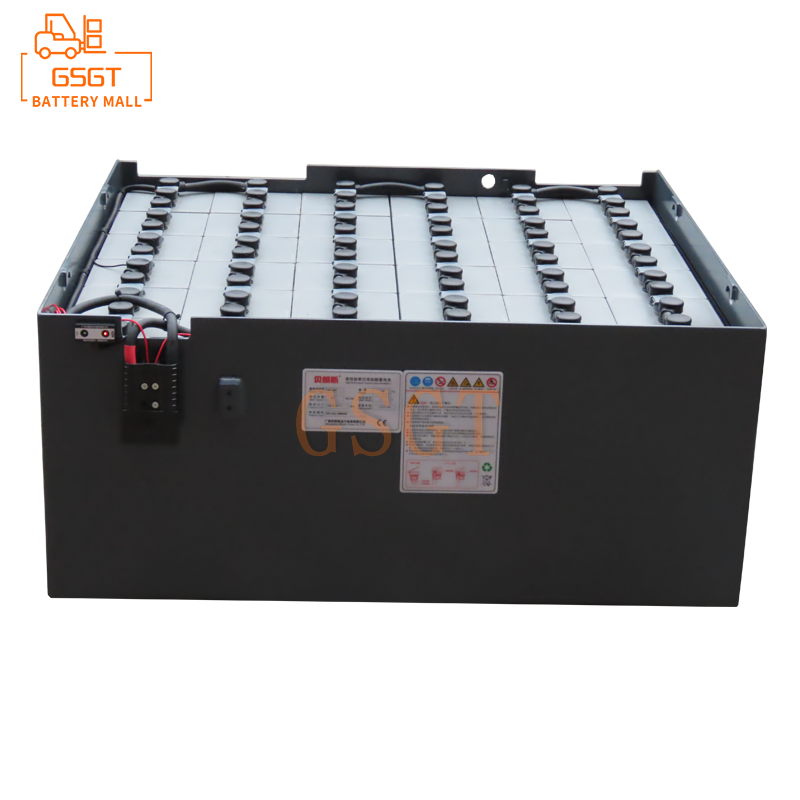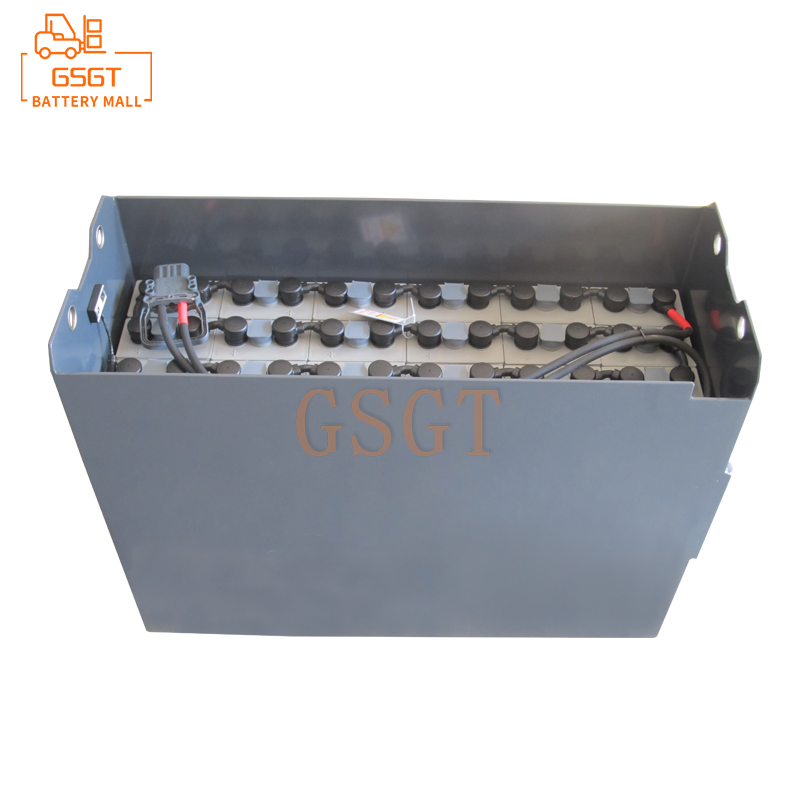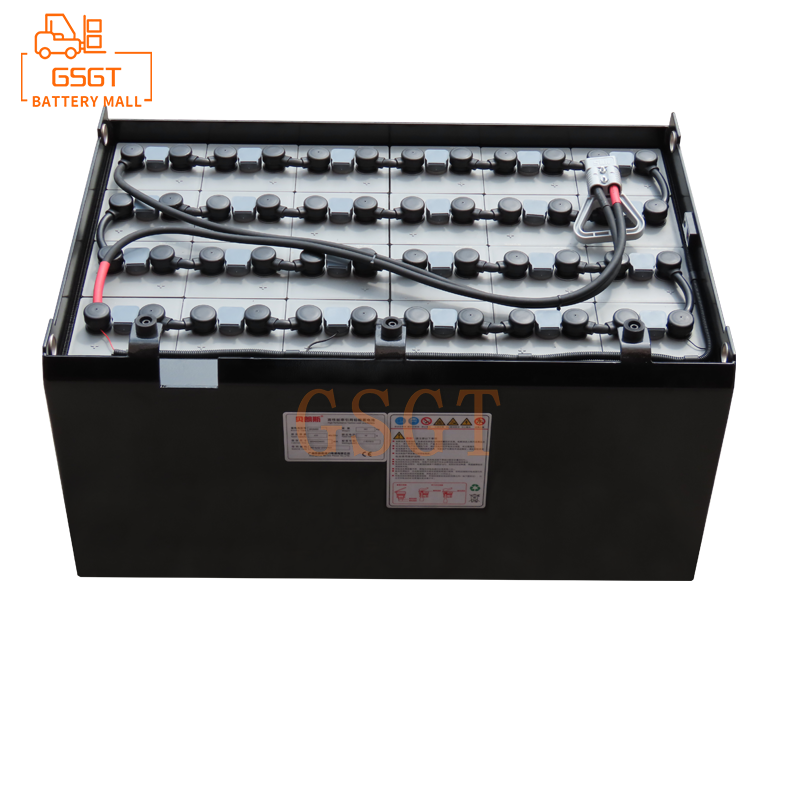Time:2025-03-29 14:40:22
Browse:532
In modern logistics, industrial production and other fields, forklifts undertake the key task of cargo handling. Its operating environment is complex and changeable, from the narrow channel of the indoor warehouse to the rugged ground of the outdoor construction site, from the high-temperature smelting workshop to the humid cold chain warehouse, the forklift lead-acid battery faces many challenges in stable power supply under such complex conditions. However, through a series of technological innovations and optimized design, lead-acid batteries can continue to provide stable power for forklifts in complex conditions.
1.The design of adapting to high and low temperature environment
(1) High temperature environment response
Under high temperature conditions, such as outdoor operations in summer or some high temperature production workshops, the internal chemical reaction speed of the lead-acid battery is accelerated, and the evaporation of electrolyte water is intensified, which can easily lead to overheating of the battery and accelerated plate corrosion, thus affecting the stability of the power supply. In order to solve this problem, some lead-acid batteries have adopted special heat dissipation design. The heat dissipation fins are added to the battery shell, and these fins are scattered on the surface of the shell, greatly increasing the contact area with the air, and the heat can be distributed to the surrounding environment more quickly. At the same time, the researchers carefully optimized the electrolyte formula and added high temperature stabilizer. This stabilizer is like injecting a "sedative" into the electrolyte, which can effectively slow down the decomposition rate of the electrolyte, reduce the self-discharge rate of the battery, and make the battery performance still stable at high temperatures.
In addition, some advanced forklifts are equipped with intelligent battery management systems, which act like a vigilant "butler" at all times. It monitors the battery temperature in real time through high-precision sensors, and the system responds quickly if the temperature is out of the appropriate range. On the one hand, automatically adjust the operation parameters of the forklift to reduce the battery load, such as properly reducing the speed of the forklift, limiting the lifting height, etc., to avoid battery damage due to overheating; On the other hand, if the heat dissipation fin is insufficient, the system can also start an auxiliary cooling fan to further enhance the heat dissipation effect and ensure stable power supply in high temperature environments.
(2) Low temperature environment response
Low temperature is also unfriendly to lead-acid batteries. In low-temperature scenarios such as cold chain logistics, the viscosity of the battery electrolyte increases, and the ion diffusion rate slows down, resulting in an increase in the internal resistance of the battery and a significant decrease in capacity and discharge performance. In order to improve the low temperature performance, the battery is improved on the plate material, using a special alloy material, which has been screened for many experiments and has higher activity at low temperatures, so that the plate can better participate in chemical reactions. At the same time, the composition of the electrolyte is optimized, the freezing point of the electrolyte is reduced, and the ionic conductivity at low temperature is increased, so that the ions can move relatively smoothly in the low-temperature viscous electrolyte.
Some forklifts are also equipped with a heating device for lead-acid batteries, and the operator can turn on the heating device in advance before starting in a low temperature environment. The heating unit uses advanced heating wire or heating film technology to quickly raise the battery temperature to the appropriate operating range. Some high-end heating devices also have the function of precise temperature control to avoid damage to the battery caused by excessive temperature, so as to ensure that the battery can stably output electric energy under low temperature conditions to meet the needs of forklift trucks.
2. Technology for dealing with vibration and shock
During the process of transporting goods, especially when driving on uneven roads or loading and unloading operations, the forklift will produce strong vibration and impact, which poses a threat to the internal structure of the lead-acid battery, which may cause plate breakage and loose connectors, and affect the stability of the power supply. In order to enhance the shock resistance of the battery, strengthening measures are adopted in the design of the battery structure. The use of a high-strength housing material, which has excellent deformation resistance, increases the thickness and strength of the housing, and can protect the internal components of the battery like a strong armor.
Inside the battery, the elastic support structure is adopted by optimizing the plate fixation method. The elastic support parts are usually made of special rubber or elastic metal, which are cleverly installed between the plate and the battery tank, like a shock absorber, reducing the force transmitted by the vibration to the plate and preventing the plate from being damaged by the vibration. In addition, the connection process of the internal connector of the battery is improved, and the connection is secured by welding or high-strength bolt fastening. The welding process can form a solid metal bond between the connectors, and the high-strength bolts can ensure the stability of the connection parts with a strong fastening force to avoid poor contact caused by vibration, and ensure that the lead-acid battery can still supply stable power under complex conditions with frequent vibration and shock.
3. Capacity and charge management for different working hours
(1) Large capacity design to meet the long-term operation
Some forklifts have heavy tasks and need to work continuously for a long time, such as forklifts in large logistics warehouses that need to work uninterrupted within a shift. For such conditions, lead-acid batteries are designed with large capacity. By increasing the plate area, the plate can accommodate more active substances, while increasing the active substance content, and increasing the rated capacity of the battery. In this way, the forklift can run longer after a single charge, reduce the charging frequency, and ensure the continuity of work.
At the same time, the battery manufacturing process is continuously optimized, from the coating process of the plate to the refinement of the battery assembly, are strictly controlled. Improve battery energy conversion efficiency, reduce energy loss, and further extend battery mileage. For example, more advanced lead paste coating technology is used to make the lead paste uniformly attached to the plate, increase the reactive site, make the electric energy conversion more efficient, and meet the long-term stable power supply needs of forklifts.
(2) Intelligent charging management ADAPTS to complex use scenarios
The use scenarios of forklifts are complex, and the remaining battery power and charging time are difficult to be unified. The intelligent charging management system comes into being, which can monitor the battery's electricity, voltage, current and other parameters in real time, and adjust the charging strategy according to the actual state of the battery. For example, the use of pulse charging technology, through the intermittent application of pulse current during the charging process, these pulse currents are like a "small brush", which can effectively eliminate the sulfide on the battery plate, improve the charging efficiency, and extend the battery life.
For batteries with different remaining capacity, the system automatically adjusts the charging current and voltage. When the battery power is very low, use a large current to quickly supplement the power; As the charge rises, gradually reduce the current to avoid overcharging. At the same time, the system can also predict the battery charging demand and plan the charging arrangement in advance according to the frequency and time law of the forklift. For forklifts that are frequently used during peak operating hours, priority is given to fast charging to ensure that they can be quickly and safely charged in complex usage scenarios, providing a strong guarantee for stable power supply of forklifts.
In complex forklift working conditions, lead-acid batteries through various technical improvements and innovations, from adapting to ambient temperature, resisting shock to optimizing capacity and charge management, to achieve stable power supply, provide solid power support for efficient and reliable operation of forklifts, and continue to play an important role in the field of forklift operations.

$3810

$4045

$2040

$2180

MESSAGE
Professional And Efficient
Security
Affordable Price
Professional Services